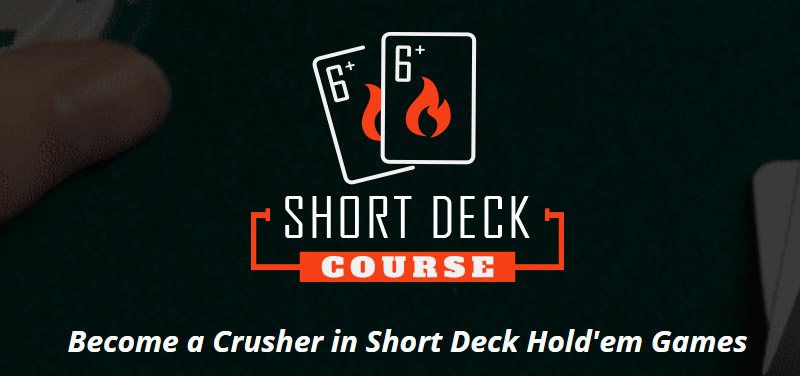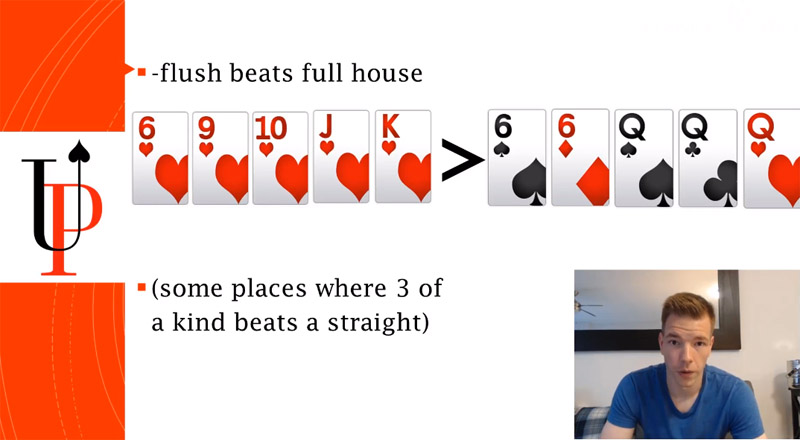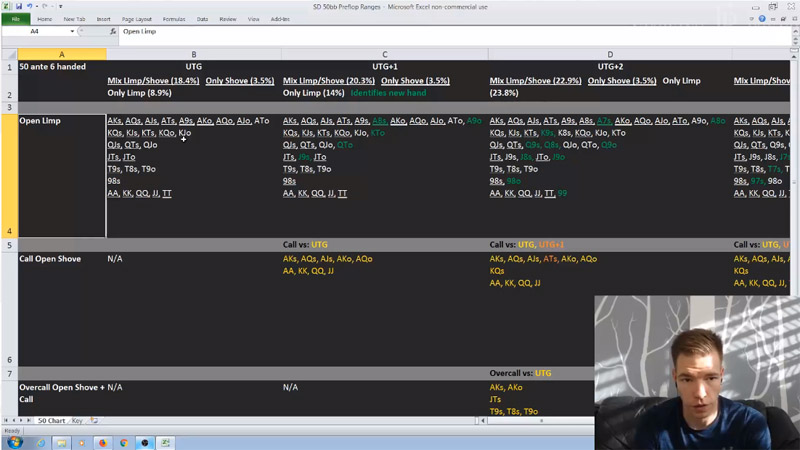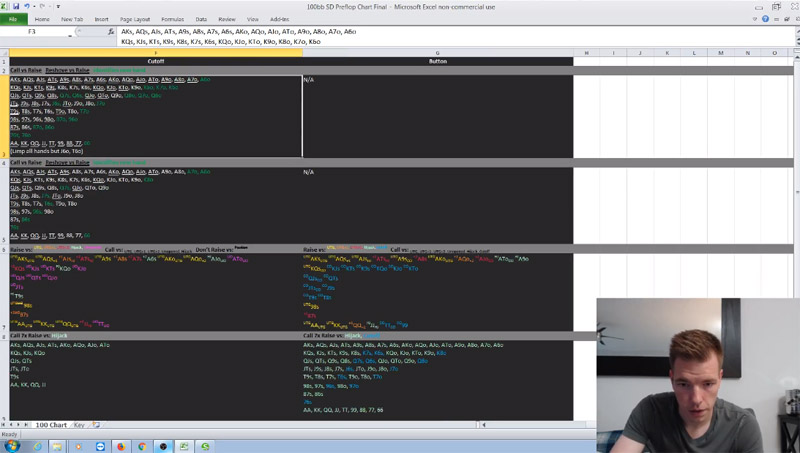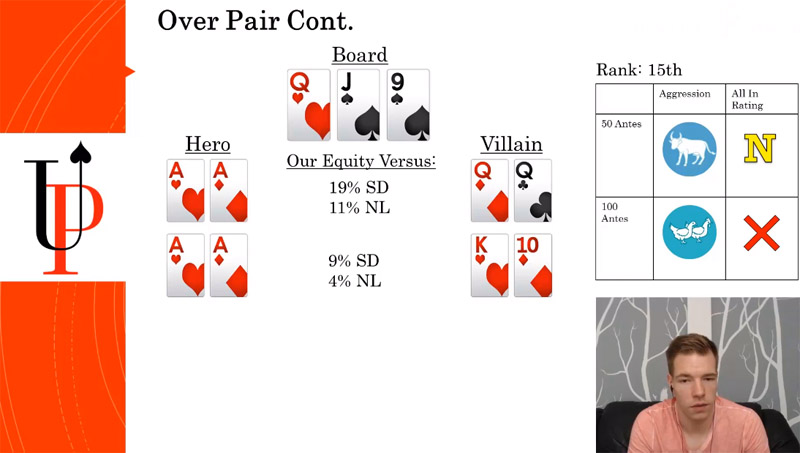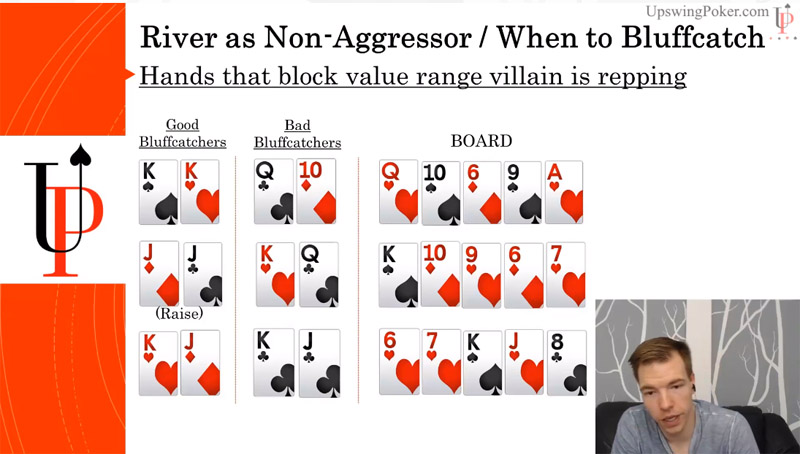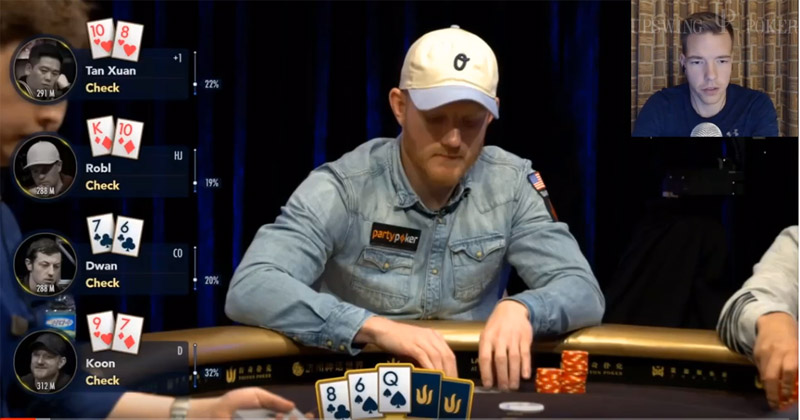Short Deck or Six Plus Hold’em is one of those games that has been all over the place in terms of popularity. While the game seems very popular in big games played in Macau, its online presence is still not as strong as that of traditional No Limit Hold’em or Pot Limit Omaha.
So, the decision whether it is worth it to spend time and money to become good in this variation is entirely up to you but if you do want to learn the game to a high level the Short Deck Course by Kane Kalas contains everything you could possibly need to achieve this goal.
Although this is one of shorter Upswing courses, Kalas has done an excellent job laying out fundamentals of Short Deck Hold’em and explaining how the game differs from the full deck variation. Having played in some of the biggest games himself, he definitely has the required credentials to produce a top-quality course that takes you from very basics to some advanced concepts that will make you a force to be reckoned with in Six Plus games across all stakes.
Upswing Short Deck Course at a Glance
Kalas has split his Short Deck course into four main areas without overly complicating things, which is great news if you’re just starting to learn the game. The course structure is as follows:
- Short Deck Fundamentals
- Preflop decisions
- Postflop game
- Play & explain examples
Even if you had never played this particular variation before and only got interested in it after seeing it played for obscene amounts of money at nosebleeds stakes, Kalas has you covered. He takes the time to really dissect the game one step at the time and as long as you don’t skip on any lessons, there shouldn’t be any questions left unanswered.
Of course, the course isn’t aimed just at beginners. Those already experienced with the game may not have much use for the Fundamentals section but will still find a lot of useful advice and tips in later sections.
Learning Six Plus Hold’em Basics
The first section of the Upswing Short Deck Course focuses on the very basics of the game, starting with the rules and building from there. While Six Plus rules are similar to those in No Limit Hold’em, there are some important differences that you need to know about so don’t skip on this section if you’re new to the game.
After this first video, Kalas goes on to explain some of the most important considerations you need to pay attention to in Short Deck and how to build your overall gameplay plan by:
- Playing more hands and raising fewer of them before the flop
- Understanding that equities run much closer
- Explaining the importance of straight draws
- Discussing blockers, etc.
Some of the ideas explained and elaborated by Kalas might come as a surprise if you’re coming from the No Limit Hold’em background but you need to keep an open mind. As similar as they may seem, these are two completely different games and there are some significant differences in terms of general strategy.
One of the concepts that you might struggle with is limping. While this is mostly considered a big no-no in traditional Hold’em, limping is a big part of the overarching strategy in Short Deck. Once you listen to Kalas explaining reasoning behind it, though, you’ll understand why.
Developing Your Short Deck Preflop Strategy
Given the fact Short Deck is a different game with different rules and equities, you can’t simply copy your preflop strategy from No Limit. This is especially true as the game is played with antes and there are is no small and big blind, which influences the strategy quite a bit.
The preflop section begins with three videos highlighting some of the most important preflop rules in Six Plus Hold’em and these are very important for further understanding of the game. In these videos, Kalas explains some general ideas about the value of hands, equities, reasons for limping with more hands, etc.
Some of the things discussed in these three videos are definitely quite interesting and eye-opening. For example, Kalas underlines that raise-folding when 50 antes deep is simply wrong as is 3-bet folding with 100 antes.
This is because equities run so much closer and once you raise, you’ll be getting pot odds that are almost always good enough to call off the rest of your stack. Again, this may seem confusing right now but after you’ve watched the course and listened to the reasoning behind it, it will all make sense.
Game-plan for Different Positions
After explaining these essential rules for the Short Deck preflop play, the course moves on explaining how to choose your hands before the flop based on your position at the table, action ahead of you and stack depth (50 antes or 100 antes).
You’ll be provided with full charts for both stack depths covering all sorts of different scenarios, such as:
- Button raises
- Shoving over an open
- Open limping & limping behind
- Raising from HJ and CO, etc.
Since Six Plus Hold’em isn’t as complex in the preflop area, especially up to 100 antes deep, these videos will explain everything you need to know moving forward. Although there is some serious math involved, Kalas has done a very good job of explaining things in a manner that will keep your attention and help you keep up, which is a big plus.
Six Plus Hold’em after the Flop
Short Deck is different from No Limit Hold’em in terms of postflop strategy as well. Certain hands go down in value while others, like nut flush draws, go up. For example, with flushes beating full houses in this particular variation, you’ll definitely need to make some serious adjustments to your game-plan from flop onwards.
Hand equities run so much closer in Short Deck so decisions can get complicated. Trying to play things on your instinct alone is usually not enough so the Flop Hand Strength section of this course will help you develop a much better understanding of how different hands stack up.
To make it easier, Kalas divides hands into several main categories, with each category getting its own explanatory video:
- Straigths & Sets
- Nut flush draws
- Overpairs & top pair / top kicker
- Bottom pair & draw
- Other draws, and more
Kalas takes the time to explain the math and all other considerations connected to each of these hand types. This section will certainly improve your understanding of Short Deck and answer many of the questions you may have had up to this point.
Tackling the River
River is an important street in all forms of no limit and pot limit poker variations and Short Deck is no exception. While there may be more focus on other streets, constructing a solid river strategy is very important and Kalas gives you plenty of advice on how to do just that.
The section on the river play is divided into two main sections: choosing bluffs and bluff catching. Both of these contain three videos that explain the most important things to focus on when making a river decision, how to choose the best hands to bluff with, etc.
As expected, many of the river ideas go back to certain concepts discussed in earlier videos, especially in terms of blockers, over-betting, and similar. You can’t and shouldn’t be making river decisions in a vacuum but rather consider all previous streets, the board texture, and your opponent’s tendencies to make the right choice.
Making Adjustments: Deviating from the GTO
Math is math but poker is played by people and people make mistakes. In the final theory section of the Upswing Short Deck Course, Kalas goes into certain exploitative plays and adjustments you can make that sometimes break the rules explained in earlier videos.
Fundamental strategies explained up to this point are designed to play against opponents who play well themselves. When this is not the case, though, and your opponents display certain preflop and postflop leaks, you can (and should) deviate from these principles to increase your win-rate.
I’m always a big fan of courses that give enough attention to exploitative adjustments and I love the fact this one does it quite extensively. Looking into things from the more human perspective doesn’t just help you win more money in certain setups but can also be a great way to eliminate some of your own mistakes and realize what the roots of these mistakes are.
Hand Analysis
Like most Upswing courses, this one also wraps things up with a play & explain section, looking into some actual Short Deck hands. Kalas goes through some hands played by an Upswing member, looks into some of his own hands, and finally goes through some of the biggest and most entertaining pots from Triton cash games.
In addition to being an excellent way to wrap things up and solidify your newly acquired knowledge, these hands are actually fun to watch, especially the Triton ones.
Kalas takes the time to go through different interesting spots and analyze everything in detail. If you may have struggled with some concepts in earlier videos, seeing them applied to actual hands may help clear everything up.
Alternatives to Kane Kallas's Short Deck Training
At HowToPlayPokerInfo, we have investigated a huge range of poker training sites and courses. Unfortunately at this time, there aren't any alternatives to this course that we could find online. So if you do want to learn to play Short Deck poker to the highest level, this is your only option besides going it alone.
Is Upswing Short Deck Course Really Worth It?
The quality of the content in Kalas’ Short Deck course is definitely way up there. He’s done an excellent job creating a course that starts from the very basics and goes all the way up to some fairly complex strategy. So, in that regard, it has something to offer to players of all skill levels, even if experienced Short Deck players may have to skip the fundamentals section.
As mentioned, though, Short Deck is still not that popular and it’s hard to say if this is the best poker investment you can make right now.
If you already play Short Deck and have access to games (live or online), I’m confident this course will easily pay back the money invested in it and then some. There simply isn’t much quality content for Six Plus Hold’em out there so adopting this knowledge will likely put you way ahead of the vast majority of your competition.
For those considering taking up Short Deck, I’d suggest you first figure out where you want to play and make sure you’ll be able to find enough action to grow your bankroll and move up the stakes. Provided you can do that, buying this course is guaranteed to help you get where you want to be much faster than to try it alone.
If you do decide to sign up, you can use code advanced50 to save $50 off your purchase.

